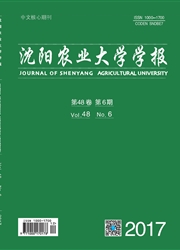

 中文摘要:
中文摘要:
高浓度氯化镁能够在一定的条件下促进溶菌酶发生聚集,但其具体的作用机制尚不明确.采用分子生物学实验和分子动力学模拟相结合的方法研究了鸡溶菌酶在不同浓度的MgCl2溶液中的聚集特性和结构稳定性.分子生物学实验结果表明,200 mmol/L MgCl2能够显著促进鸡溶菌酶形成二聚体和三聚体,但效果没有NaCl显著.分子动力学模拟分析显示,200 mmol/L MgCl2能够引起螺旋3和螺旋4的显著偏移,同时能够减弱溶菌酶聚集关键区域(40-110位残基)内二硫键Cys76-Cys94的结合强度;另一方面,MgCl2也能减少疏水核心内部氢键的数量,促使疏水核心的稳定性显著降低,从而促进了溶菌酶分子间的相互作用.
 英文摘要:
英文摘要:
Magnesium chlorate(MgCl2) could induce lysozyme aggregation under some conditions,but the detail mechanism has been poorly understood.In this study,we employed molecular biological experiments and molecular dynamic simulations to investigate the aggregated property and structural stability of chicken lysozyme when treated with MgCl2.The molecular biological results indicated that 200 mmol/L MgCl2 could obviously promote lysozyme to form dimer and trimer,but the effect was lower than NaCl.The simulation results indicated that 200 mmol/L MgCl2 could induce large displacement of helix 3 and helix 4 and weaken the disulfide bond Cys76-Cys94 located in the aggregation critical region(residue 40 to 110).In addition,our results suggested that the stability of hydrophobic core could be weakened by the decrease of hydrogen bonds number in this region when treated with MgCl2.These could be the main reasons which promote the intermolecular aggregation between lysozyme mononers under MgCl2 condition.
 同期刊论文项目
同期刊论文项目
 同项目期刊论文
同项目期刊论文
 Molecular dynamics simulation to investigate the impact of disulfide bond formation on conformationa
Molecular dynamics simulation to investigate the impact of disulfide bond formation on conformationa Roles of hydrophobic and hydrophilic forces on maintaining amyloid-prone cystatin structural stabili
Roles of hydrophobic and hydrophilic forces on maintaining amyloid-prone cystatin structural stabili Fluorescence spectroscopic characterization of dissolved organic matter fractions in soils in soil a
Fluorescence spectroscopic characterization of dissolved organic matter fractions in soils in soil a 期刊信息
期刊信息
